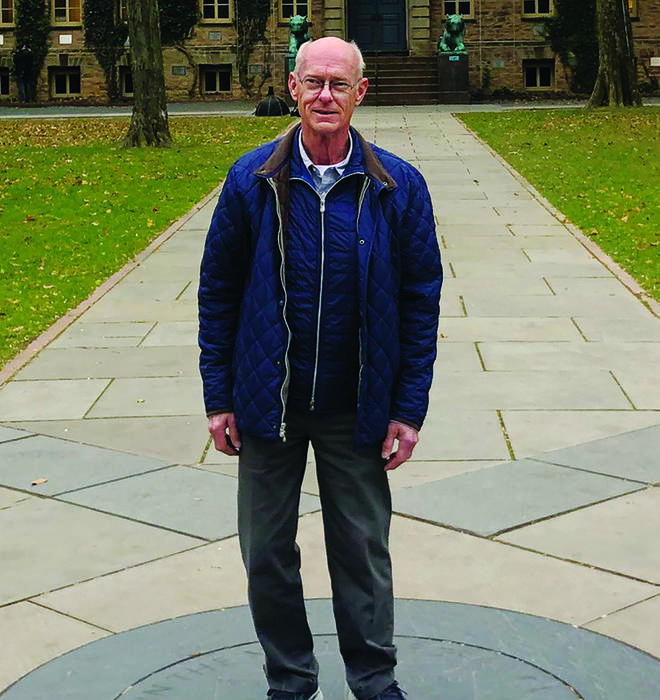
June 17, 1950 — Feb. 19, 2022
As a Princeton undergrad, David Boggs ’72 earned a reputation for technical wizardry. He helped build a graphics terminal for a computer in the electrical engineering department, learned to use the tools in the E-Quad’s machine shop, and tinkered with his Scout, a Jeep-like vehicle sold by International Harvester.
Boggs devoted his nights to upgrading the wiring at WPRB’s Holder Hall studio, where he also constructed broadcast-quality electronics from basic components. The on-air staff could be “a little rough on the equipment,” recalls Bruce Almich ’72, a friend on the WPRB tech team, undoing hours of work with a carelessly spilled drink.
“The cool thing about Dave was his patience with people,” Almich says. “He was a techie, but he was patient. … I don’t think he ever got really mad at anybody.”
Boggs’ skills — technical and interpersonal — served him well when he moved on to Stanford for graduate school and landed a job at Xerox’s Palo Alto Research Center (PARC), a hub of innovation in the 1970s. One day at PARC, Boggs observed researcher Bob Metcalfe stripping coaxial cable to test a new idea for networking computers. He offered his assistance and the two became fast friends, working day and night on what would soon be known as Ethernet.
“Boggs famously said, ‘Apparently Ethernet may not work in theory,
but it works in practice.’ ”— Bob Metcalfe, Co-Inventor of Ethernet
“We were complementary, to a large degree,” Metcalfe tells PAW. Metcalfe drafted the technical papers and patent application, he says, while Boggs was “the brilliant implementer.”
In Dealers of Lightning, a 1999 book about PARC, Michael Hiltzik wrote that Ethernet “was explicitly designed to be imperfect,” ensuring that the inevitable glitches involved in sending packets of data from one computer to another would not bring down the whole network.
A few years later, when Metcalfe was lobbying for the widespread adoption of Ethernet, opponents and competitors challenged its efficacy. But by then, the system had already proven its worth in the offices of early adopters. After reviewing mathematic models that questioned the technology’s scalability during a conference in San Jose, California, Metcalfe recalls, “Boggs famously said, ‘Apparently Ethernet may not work in theory, but it works in practice.’ ”
Ethernet revolutionized local networks and provided protocols that paved the way for Wi-Fi. Newer versions of Ethernet continue to be used in cutting-edge applications such as NASA’s Orion spacecraft, and artifacts from its early days are on display at the National Museum of American History in Washington, D.C., and the Computer History Museum in Mountain View, California.
Boggs, who was 71 when he died of heart failure Feb. 19, 2022, moved on from hardware to software midway through his career, and he took the same pride in his coding that he’d taken in his networking, according to his wife, fellow PARC alum Marcia Bush. “He tended to get into depth in everything he did,” Bush says. That was also true for an eclectic range of hobbies that included wine tasting, target shooting, and metalworking.
The Boggs and Metcalfe collaboration ended in the ’70s, but the two friends continued to see each other at an annual summer camp Metcalfe hosts on an island in Maine. Boggs, ever the technician, would arrive with tools in hand, ready for some new project at the rustic cabin.
“He liked to fix things and build them,” Metcalfe says. “So this island camp now has a first-class solar panel system and a first-class roof water-harvesting system.”
Brett Tomlinson is PAW’s managing editor.






No responses yet